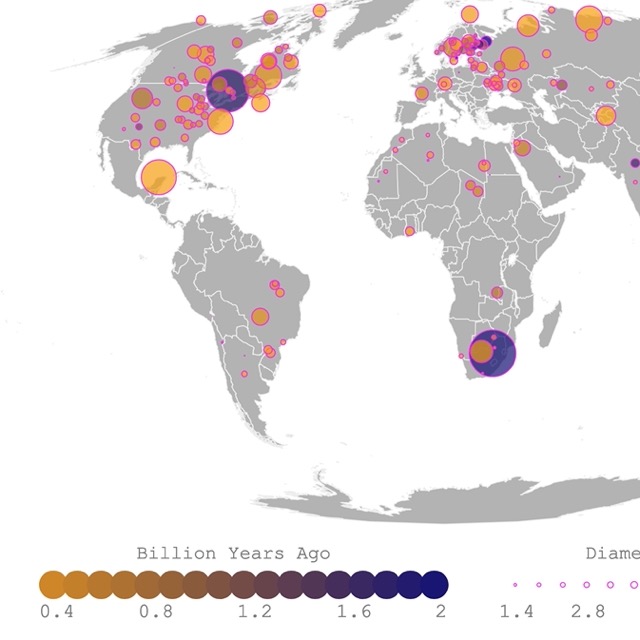Map of Fossils in North America
This interactive map shows the location of fossil collections found in North America. The color indicates the Geologic Period of origin. Hover over the map for collection name, location, intervals, and dates. For more detail, zoom in the map. For more information, scroll down.
| Era | Period | Million Years Ago |
|---|---|---|
| Cenozoic | Quaternary | 0.0042 |
| Neogene | 3.6 | |
| Paleogene | 28.1 | |
| Mesozoic | Cretaceous | 72.1 |
| Jurassic | 152.1 | |
| Triassic | 208.5 | |
| Paleozoic | Permian | 254.14 |
| Carboniferous | 303.7 | |
| Devonian | 372.2 | |
| Silurian | 423 | |
| Ordovician | 445.2 | |
| Cambrian | 489.5 | |
| Neoproterozoic | Ediacaran | 635 |
| Cryogenian | 720 | |
| Tonian | 1,000 |
What is a Fossil?
Fossils are altered remains, impressions, or traces of organisms that lived a long time ago. This definition includes the remains of an organism's behavior.
Fossils are important to geologists because they help determine the age of rocks and describe the environment in which a rock was formed.
Remains of recently dead organisms that have been buried are not considered fossils. For example, a bone or a shell that has not been altered are not considered fossils.
To be considered, fossil remains must be older than 10,000 years.
The study of fossils is called paleontology. The process that creates fossils is called fossilization.
How Are Fossils Formed?
When organisms die, their bodies are usually consumed by other animals or decompose. Nevertheless, there is a slight chance that in the right circumstances, their remains are preserved.
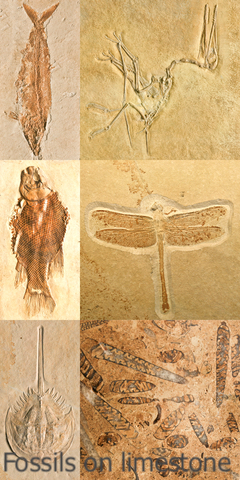
Soft-body parts are more likely to be destroyed, but hard body parts like bones or shells are more likely to be preserved.
In particular conditions, soft-bodied organisms, entire ecosystems, or soft body parts get preserved. These involve the organism dying and being buried in anaerobic conditions (no oxygen), covered in volcanic ash, or dying in water with adequate chemistry to preserve bodies.
A rapid burial decreases the chances of the remains being consumed by other organisms or destroyed by the elements like waves or wind. Lack of oxygen prevents bacteria from decomposing it.
The burial period can last thousands to millions of years. In this period, the sediment around the body will change the shape and chemical composition of the remains.
Because most fossils are formed when they have been replaced by minerals, it can be said that most of them are made of rock material.
The final step is erosion. The rocks around the fossils get eroded, exposing them to the surface. Source: Department of Mines and Petroleum (http://www.dmp.wa.gov.au/What-is-a-fossil-1661.aspx)
What are the Different Types of Fossils?
There are different ways to categorize fossils. These categories depend on how the fossil is formed.
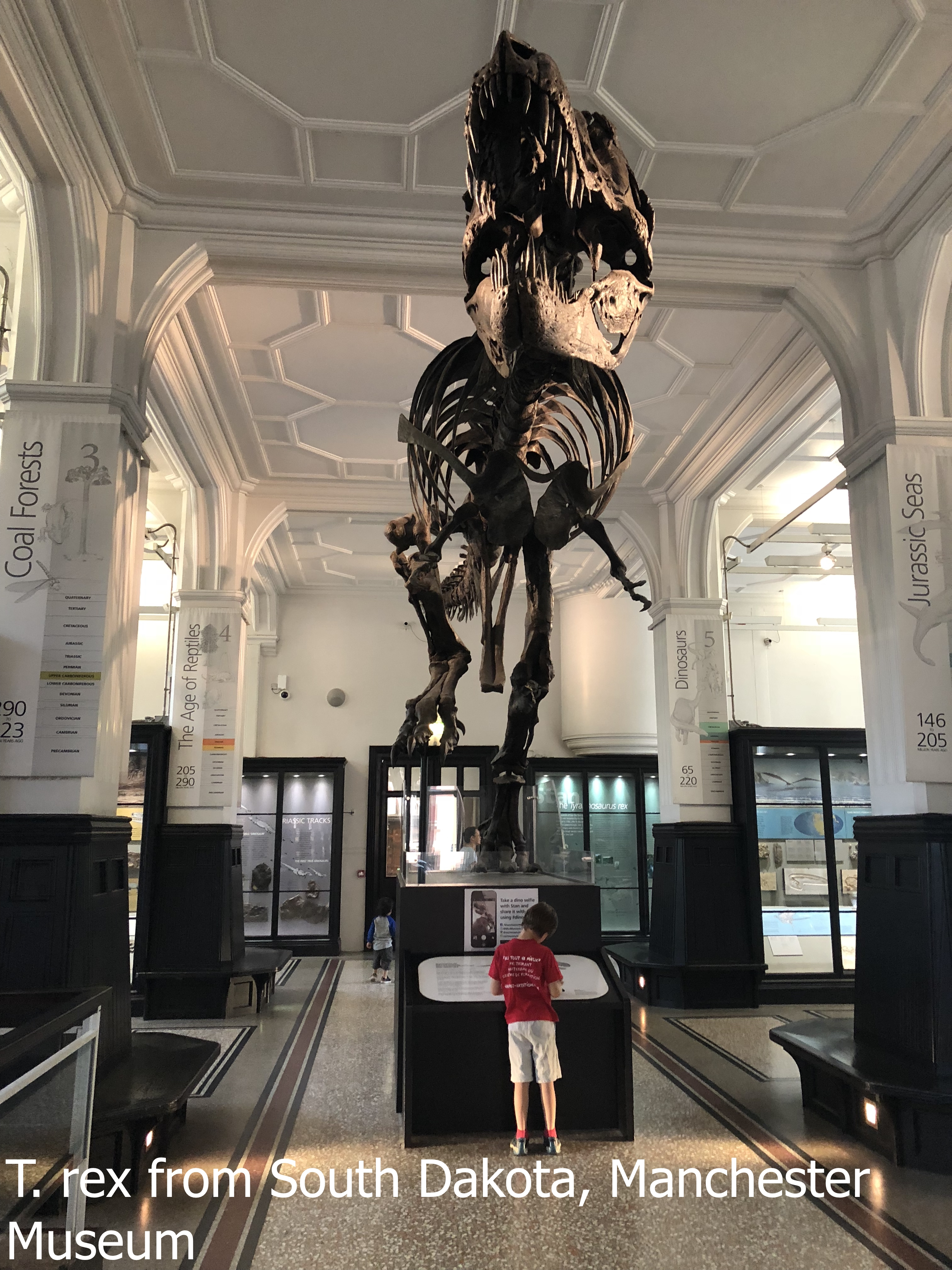
The classification below is from Socratic, it divides fossils into 5 types:
Petrified Fossils
Organism remains are petrified or turned into stone. Through this process, mineral-rich water penetrates the small pores of the original organism.
Eventually, these minerals precipitate and fill these pores completely.
Mold Fossils
Mold fossils are created when the organism remains, are covered by sediment, and then dissolved by percolated water.
The organism's shape stays as a mold, revealing its original structure.
Molds only preserve the reflection of the external structure, not the internal one.
Cast Fossils
Cast fossils originate when void or empty spaces of a mold or creature are filled with mineral sediment.
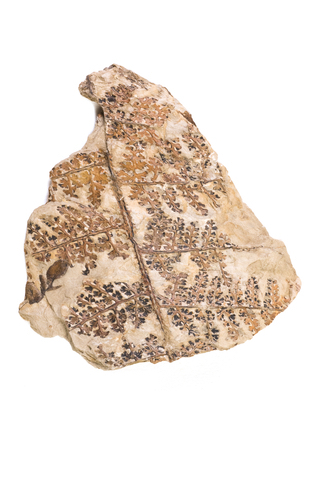
Carbon Films
These fossils occur when an organism is covered in fine sediment. Eventually, the pressure pushes out liquid and gases, leaving behind a carbon film.
This process preserves the delicate details of plants and animals. The carbon film may be lost at the end, but the impression remains.
Preserved Remains
Preserved remains occur when organism remains do not change much. This situation is the result of different processes.
For example, this process has occurred with mammoths frozen in permafrost.
Preserved remains also happen with insects preserved in amber. Amber is the hardened sticky sap from trees. Amber itself is considered a gemstone.
Another example is remains preserved in tar. Tar is thick petroleum that collects in surface pools. La Brea Tar Pits in Los Angeles California, have preserved mastodons and saber-toothed cats.
Trace Fossils
Trace fossils are evidence of organisms' life. These include tracks and footprints made on sediment that later transition into rock.
Examples include burrows made by animals in wood or sediment. These holes are then filled with minerals and hence are preserved. Small typical fossilized burrows include worm burrows.
Another trace fossil is coprolites. These are the feces of organisms. These contain valuable information about an animal's diet and the environment in which it lived.
What is the Most Common Fossil?
The most expected fossil depends on geography. What is common in North America might not be expected in Africa. Nevertheless, some groups are more common.
The most common group of organisms found in collections is the snail Turritella. This snail appeared during the Cretaceous period, source: Lisbdnet.com.
The groups mentioned below are also quite common.
Belemnites and Ammonites
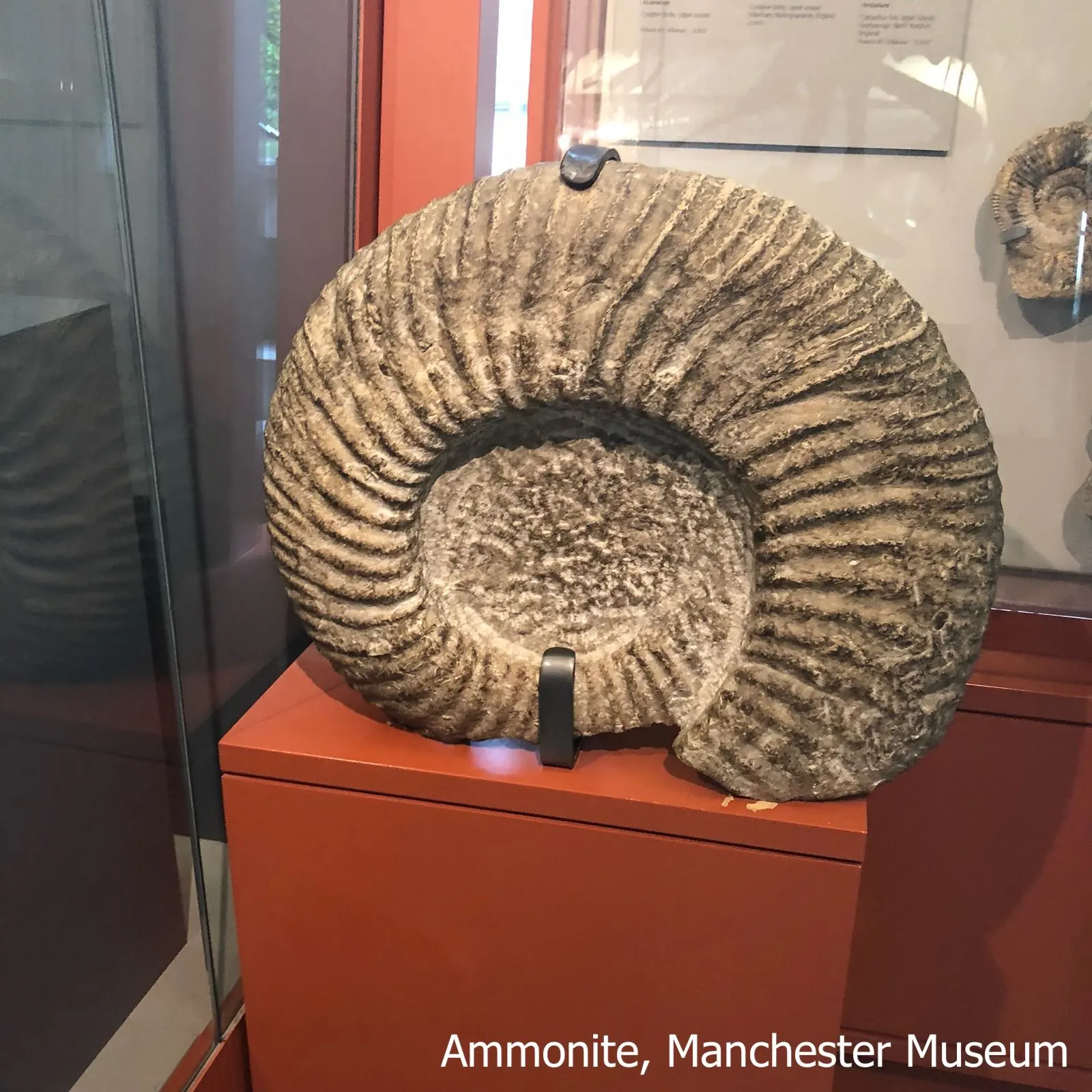
Ammonites were marine mollusks. They are recognized by their coiled shells. They are commonly found on limestone.
Belemnites were squid-like cephalopods.
Corals and Bivalves
Corals are still alive today, and they have been around for about 535 million years. Corals might be hard to recognize depending on how they were fossilized.
Bivalves are easy to recognize because they look like the shells you find at the beach.
Fish Fossils
Fish fossils are not that common. Nevertheless, they tend to be localized. If you are in one of those places, you will likely find one.
A typical case is shark teeth. Sharks grow and lose their teeth, therefore more likely to be around, source: Zmescience. These are a common find on the beaches of northeast Florida.
Where are Most Fossils Found?
Most fossils are found in sedimentary rocks of the appropriate age that is exposed. These locations are cliffs, river valleys, hillsides, or human-made exposures like quarries; Australian Museum.
Places like deserts, mountains, and badlands are also great locations to find them. This is because these sites have a great deal of erosion.
Fossils have been found in every continent, but the greatest variety is found in North America, China, and Argentina.
Another common site to find fossils is southern England, though not as much as in the previous 3 countries.
Best Places to Find Fossils in North America

The Western United States, from Texas to Montana, are the best places to find fossils in North America, source: Dinosaur World.
The Eastern Coast of the United States has a build-up of vegetation and soil layers. Fossils are not common on the Eastern coast. The Western United States is eroded and dry, making fossil discoveries much easier.
Morrison Formation
The Morrison formation layer is one of the most productive strata for fossils. It is centered in Wyoming and Colorado, extending to Montana, North Dakota, South Dakota, Nebraska, and Kansas.
In the Morrison formation, it is possible to find stegosaurus and brontosaurus.
Part of the Morrison formation can be found in the Dinosaur National Monument, on the border of Utah and Colorado.
Hell Creek Formation
Hell Creek Formation is located between Montana through Wyoming and North and South Dakota.
Hell Creek Formation has an incredible array of dinosaurs, crocodiles, turtles, fish, amphibians, and mammals.
The U.S. has dinosaur formations spread through various states, while Canada has them concentrated in one area.
Dinosaur Provincial
The third location to find fossils in North America is located in Canada. The Dinosaur Provincial Park is situated in the Canadian Badlands, in Southern Alberta.
Dinosaur Provincial Park is a UNESCO World Heritage Site and has generated over 50 different dinosaur species, source: WorldAtlas.
The well-known Tyrannosaurus rex is found in Montana and South Dakota.
What State has the Most Fossils?
Despite the formations named above and their location, the state with the most fossils recorded is California!
California has 1,473 fossils recorded. The most common Genus is Phalacrocorax, a relative of the cormorants.
The most common time period is Holocene. The most common dig location is the La Brea Tar Pits in Los Angeles, source: Stacker
National Parks with Fossils
A significant number of sites to see fossils are National Parks. According to Parks Experience, these include:

- Agate Fossil Beds National Monument, Nebraska: Miocene Epoch mammals like Menoceras
- Dinosaur National Monument, Colorado and Utah: Stegosaurus, Apatosaurus, and Diplodocus
- Florissant Fossil Beds National Monument, Colorado: Petrified trees and insects from the Eocene Epoch.
- Grand Canyon National Park, Arizona: Stromatolites and ancient seashells.
- Fossil Butte National Monument, Wyoming: Eocene Epoch reptiles, amphibians, plants, and small mammals.
- Hagerman Fossil Beds National Monument, Idaho: Mainly Hagerman Horses from the Pliocene Epoch.
- John Day Fossil Beds National Monument, Oregon: Plants and animals spanning 40 million years.
- Zion National Park, Utah: Dinosaur Tracks!
- Petrified Forest National Park, Arizona: Triassic Fossilized reptiles.
- Tule Springs Fossil Beds National Monument, Nevada: Ice Age (Holocene) mammals like mammoths and ground sloths.
- Badlands National Park, South Dakota: Deer and antelope-like mammals to camels and rhinoceroses.
Where are the Oldest Fossils Found?
Ancient fossils are very difficult to confirm. These have retained very little biologic material. They are so old, tiny, and their form so simple; they are too different from what we consider alive today.
These poorly known fossils come from the Archean (~4000 Ma), Proterozoic (~2,500 Ma), and Phanerozoic (~541 Ma) eons.
The oldest fossils are found in Western Australia. They belong to microbial organisms that lived 3.5 billion years ago, University of Wisconsin.
The oldest fossil found on this map in the contiguous United States is in Empire Mine, Northern Michigan. It is ~2,300 Ma old.
The oldest fossil on this map is found in Greenland. It is located in Isua Supercrustal Belt, an area located on the southwest coast of Greenland. Its fossils are about ~3.5 Ma
Fossil Collections in North America
These fossil collections locations were downloaded from the Paleobiology Database.
According to this database, "A fossil collection is somewhat loosely defined as a set of fossil occurrences that are co-located geographically and temporally. Each collection has a geographic location, stratigraphic context, and age estimate."
Also, "A fossil occurrence represents the occurrence of a particular organism at a particular location in time and space."
The shapefiles with state boundaries were downloaded from Natural Earth Data.
Made by Luz K. Molina with D3.js.


